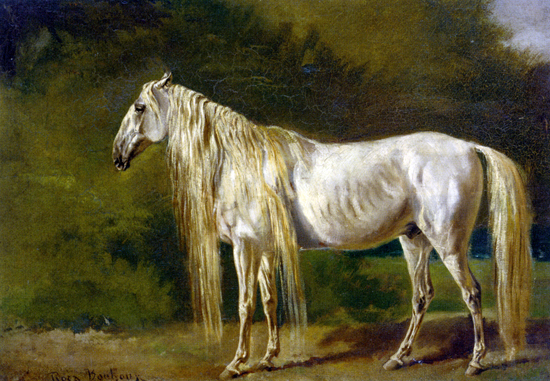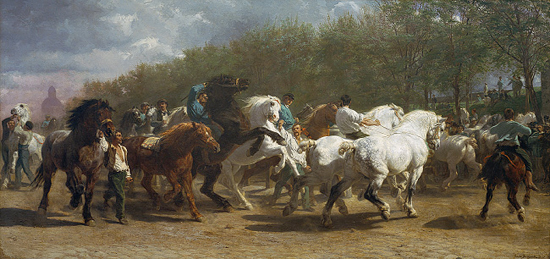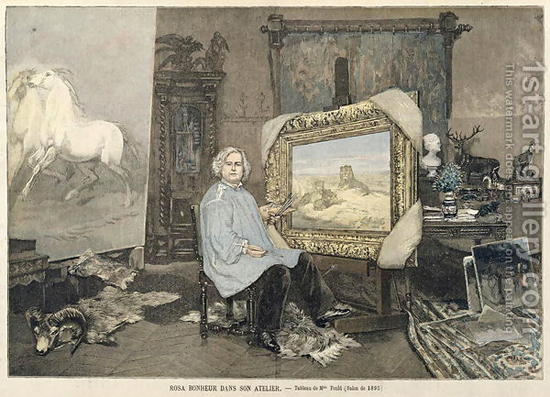In a century that did its best to keep women “in their place,” Rosa Bonheur defined herself outside of the social and legal codes of her time. To the horror and bewilderment of many, she earned her own money, managed her own property, wore trousers, hunted, and smoked.
Rosa Bonheur (1822 – 1899)
Happy Birthday to Rosa born on March 16, 1822.
She was one of four children, each trained as an artist. Most influential in her life, both artistically and socially, was her father, Oscar-Raymond Bonheur, also a trained artist.
As was traditional in the art schools of the period, Bonheur began her artistic training by copying images from drawing books and by sketching from plaster models. As her training progressed she began to make studies of domesticated animals from life, to include horses, sheep, cows, goats, rabbits and other animals in the pastures on the perimeter of Paris. When Rosa Bonheur began her career as a professional artist, she had already been trained by her father who had allowed her to study in all male classes. Rosa also learned by sketching masterworks at the Louvre from the age of fourteen.
As a French Realist she established herself as the foremost “animalier,” or animal painter, linked with landscape painting and the Realist tradition of the time.




Her fascination with, and meticulous rendering of animals fit in perfectly with Realism and popular trends in nature studies. Rosa was a hit with the public, and exhibited yearly at the Salon beginning in 1841. Her sales were brisk due partly to the fact that everyone had heard of her: she earned a living as an artist, won awards, smoked in public, wore overalls (she needed a special license to do so) and visited slaughterhouses to study animal anatomy. In short, she was a notorious woman.

by Madame Consuelo-Fould
After her 1853 masterpiece The Horse Fair became world famous, two interesting things happened. Rosa began receiving honors, including the Légion d’honneur (from the Empress Eugénie, in 1865), previously only held by men and retreated from the limelight.
She bought an estate near the Forest of Fontainebleau and settled there with her life-long companion, Nathalie Micas (and, after Micas’ death, American painter Anna Klumpke), and her menagerie of animals. She died at the age of 77.
Today she is also revered for being an outspoken feminist, and gaining female visual artists more equal status. Her nonconformity was outrageous for 19th-century Paris but, because she was so successful and independently wealthy, she forced many to reconsider the “role” of women artists.
Source: http://en.wikipedia.org/wiki/Rosa_Bonheur
Famous Work:
Bonheur began work on The Horse Fair in 1852. For a year and a half, she made sketches twice a week at the horse market in Paris, on the boulevard de l’Hôpital, dressing as a man in order to attract less attention from the horse dealers and buyers. The picture shows with accuracy the trees lining the boulevard and the cupola of the Hôpital de la Salpêtrière nearby.
You Also Might Enjoy






